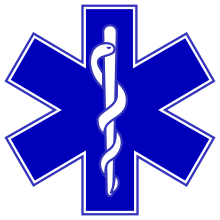Advanced Medical Priority Dispatch System
This article relies largely or entirely on a single source. (July 2008) |
This article includes a list of references, related reading, or external links, but its sources remain unclear because it lacks inline citations. (April 2009) |

The Advanced Medical Priority Dispatch System (AMPDS), is an Emergency Medical Dispatch (EMD) system developed and marketed by Priority Dispatch Corporation. AMPDS is primarily used in the United Kingdom and Ireland, where it is medically approved. The developer has similar products for police and fire.
AMPDS provides a unified system used to dispatch appropriate aid to medical emergencies, It includes systematized caller interrogation and pre-arrival instructions. The caller responses are used as inputs to gain a main response output category - A (Immediately Life Threatening), B (Urgent Call), or C (Routine Call). This can link to a performance targeting system such as ORCON to match call metrics to their targets, such as category response time. For example, in the United Kingdom, calls rated as 'A' on AMPDS have an 8 minute responder-on-scene target.
Each call is also assigned a sub-category or code, often used as a means of gathering further statistics about performance. It also helps when analysing the calls for how the call was described by the informant, compared to the injury or illness found when the crew attend. This can then be used to help improve the questioning system which gives the AMPDS classification. Each category is numbered alphabetically from 1 (abdominal pain) through 32 (unknown). This is usually used for brevity and privacy over the radio. In some areas instead of the A, B, C categories, A (alpha) through E (echo) are used.
See also
References
- United Kingdom Department of Health - AMPDS Call Categorisation Version 11. Her Majesty's Stationery Office. April 2005
